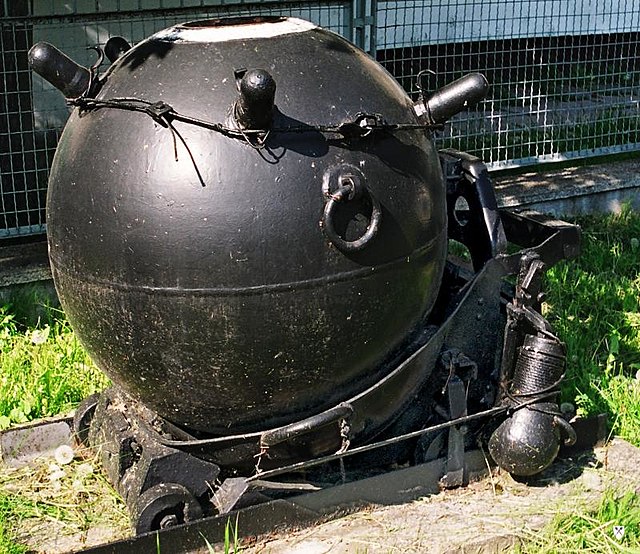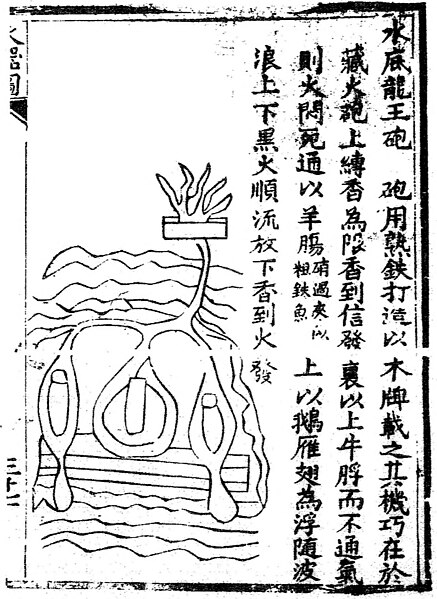A naval mine is a self-contained explosive device placed in water to damage or destroy surface ships or submarines. Unlike depth charges, mines are deposited and left to wait until they are triggered by the approach of, or contact with, any vessel or a particular vessel type, akin to anti-infantry or anti-vehicle mines. Naval mines can be used offensively, to hamper enemy shipping movements or lock vessels into a harbour; or defensively, to protect friendly vessels and create "safe" zones. Mines allow the minelaying force commander to concentrate warships or defensive assets in mine-free areas giving the adversary three choices: undertake an expensive and time-consuming minesweeping effort, accept the casualties of challenging the minefield, or use the unmined waters where the greatest concentration of enemy firepower will be encountered.

Polish wz. 08/39 contact mine. The protuberances near the top of the mine, here with their protective covers, are called Hertz horns, and these trigger the mine's detonation when a ship bumps into them.
British Mk 14 sea mine
A 14th-century illustration of a naval mine and page description from the Huolongjing
David Bushnell's mines destroying a British ship in 1777
A depth charge is an anti-submarine warfare (ASW) weapon designed to destroy submarines by detonating in the water near the target and subjecting it to a destructive hydraulic shock. Most depth charges use high explosives with a fuze set to detonate the charge, typically at a specific depth from the surface. Depth charges can be dropped by ships, patrol aircraft and helicopters.
US World War II Mark IX depth charge. Streamlined and equipped with fins to impart rotation, allowing it to fall in a straight trajectory with less chance of drifting off target. This depth charge contained 200 lb (91 kg) of Torpex.
The Mk 101 Lulu was a US nuclear depth bomb operational from 1958 to 1972
Depth charges on USS Cassin Young (DD-793)
Depth charge exploding after being released by HMS Ceylon








